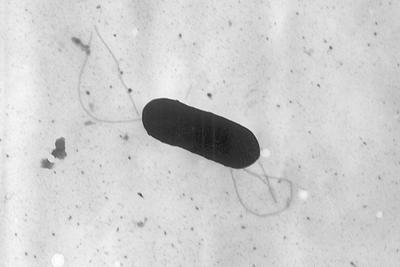A listeria outbreak linked to ready-to-eat sandwiches and snacks has sickened at least 10 people in the U.S., and a producer is voluntarily recalling dozens of products sold to retail stores, hospitals, hotels, airports and airlines, federal officials said.
The products were made by Fresh & Ready Foods LLC and were sold in Arizona, California, Nevada and Washington.
Those who fell ill and were hospitalized were in California and Nevada. The outbreak has been simmering for many months: The Centers for Disease Control and Prevention said cases date to December 2023.
is caused by a particularly resilient that can survive and grow even during refrigeration. About 1,600 people are infected with it ŌĆö and 260 die ŌĆö each year in the U.S., according to the CDC.
HereŌĆÖs what you need to know:
What was recalled?
The voluntary recall covers specific products distributed between April 18 and April 25. The products have ŌĆ£Use ByŌĆØ dates from April 22 to May 19.
Brand names include: Fresh & Ready Foods, City Point Market Fresh Food to Go and Fresh Take Crave Away.
Federal officials say anyone with the products should throw them away or return them. They also suggest cleaning any surfaces that touched the recalled foods.
Where does listeria come from?
Listeria bacteria thrive in moist environments, including soil and water and decaying vegetation and are carried by some animals.
The hardy germs are typically spread when food is harvested, processed, transported or stored in places that are contaminated with the bacteria.
When the bacteria get into a food processing plant, they can be tough to eradicate.
What are the symptoms of listeria?
Foods contaminated with the bacteria can make people sick. Symptoms can be mild and include fever, muscle aches, nausea, vomiting and diarrhea. More serious illness can include headache, stiff neck, confusion, loss of balance and convulsions.
Listeria poisoning is tricky because symptoms can start quickly, within a few hours or days after eating contaminated food. But they also can take weeks or up to three months to show up.
Those most vulnerable to getting sick include the very young, people older than 65 and those with weakened immune systems or who are pregnant.
Does cooking kill listeria?
Listeria can survive and grow in refrigerated food. It can be killed by heating foods to ŌĆ£steaming hot,ŌĆØ or 165 degrees Fahrenheit (74 degrees Celsius), the CDC says. But that’s not always possible ŌĆö or palatable ŌĆö for foods that are made to be eaten cold.
Because listeria can survive under refrigeration, itŌĆÖs important to clean and sanitize any surfaces, including refrigerator drawers and shelves, that may have come in contact with the products.
___
The Associated Press Health and Science Department receives support from the Howard Hughes Medical InstituteŌĆÖs Science and Educational Media Group. The AP is solely responsible for all content.



























